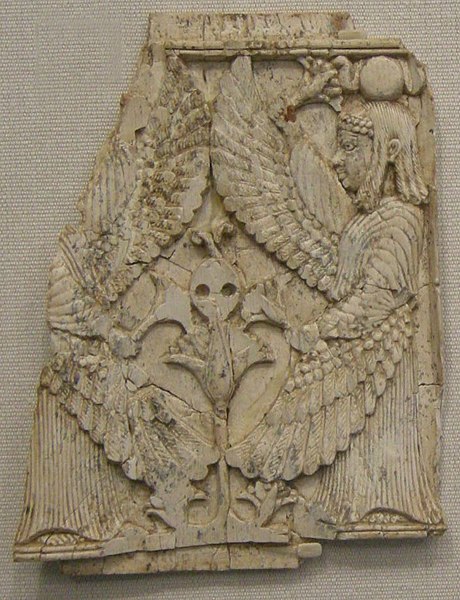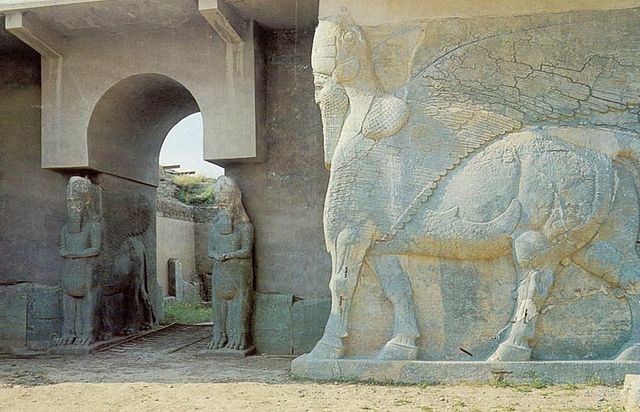The Nimrud ivories are a large group of small carved ivory plaques and figures dating from the 9th to the 7th centuries BC that were excavated from the Assyrian city of Nimrud during the 19th and 20th centuries. The ivories mostly originated outside Mesopotamia and are thought to have been made in the Levant and Egypt, and have frequently been attributed to the Phoenicians due to a number of the ivories containing Phoenician inscriptions. They are foundational artefacts in the study of Phoenician art, together with the Phoenician metal bowls, which were discovered at the same time but identified as Phoenician a few years earlier. However, both the bowls and the ivories pose a significant challenge as no examples of either – or any other artefacts with equivalent features – have been found in Phoenicia or other major colonies.
An ivory plaque which depicts a lion eating a man, from Nimrud in the British Museum. The plaque still has much of its original gold leaf and paint.
Cloisonné furniture plaque with two griffins in a floral landscape, Phoenician style, Metropolitan Museum of Art
Plaque
"The lady at the window", Sulaymaniyah Museum, Iraq.
Nimrud is an ancient Assyrian city located in Iraq, 30 kilometres (20 mi) south of the city of Mosul, and 5 kilometres (3 mi) south of the village of Selamiyah, in the Nineveh Plains in Upper Mesopotamia. It was a major Assyrian city between approximately 1350 BC and 610 BC. The city is located in a strategic position 10 kilometres (6 mi) north of the point that the river Tigris meets its tributary the Great Zab. The city covered an area of 360 hectares. The ruins of the city were found within one kilometre (1,100 yd) of the modern-day Assyrian village of Noomanea in Nineveh Governorate, Iraq.
A lamassu at the North West Palace of Ashurnasirpal II before destruction in 2015.
1851 sketch of Layard's expedition removing a Lamassu
1849 sketch of Layard's expedition transporting a Lamassu
A stele in situ at Nimrud








